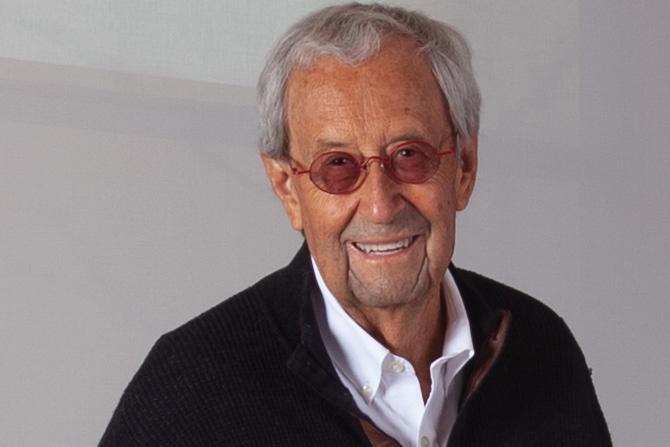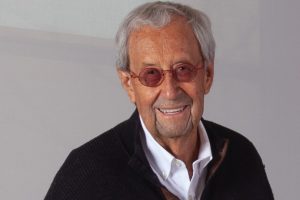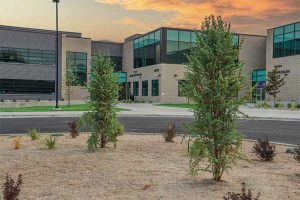Featured Image above: Kanzan House – Photo by Gabe Border
Jack Smith has had a long and continuing career as both a practitioner and a professor of architecture, and his peers have recognized him as a distinguished architect. We at AIA Idaho were pleased to interview him and thank him for the opportunity.
Why did you become an architect?
I wanted to be an architect from a very early age. I believe that architecture is first about building and second about everything else. At age 10, I gained a passion for building by working summers for my uncle, a general contractor. Later, at age 14, my cousin Max, a designer, gave me books on Frank Lloyd Wright, Mies van der Rohe and Le Corbusier, the big three modern architects of the time. I read them all before entering college.
Construction is an important teacher. As an architect, you should be able to do anything you ask a contractor to do. Gaining a passion for books and reading is critical to any education.
You studied architecture at the University of Utah and taught design there from 1964 to 1967. You also had an apprenticeship with John Sugden. What were the most important things you learned as part of your university education and apprenticeship?
I entered college in 1949. Although this was the mid-20th century, it was early enough to have professors from the École des Beaux-Arts, who were well versed in classical architecture, and some influenced by the German Bauhaus, who were modernists. Gaining an appreciation for history, classical architecture, and modernism was important and remains important to my practice and teaching.
In my undergraduate years, I also studied other disciplines, including music, art history and English literature. I believe these other disciplines broadened my outlook.
Due to financial constraints, I left college before obtaining my degree. In 1952 I met John Sugden, a Mies van der Rohe protégé. I served a 12-year apprenticeship with John, then took the architectural registration exams to become a licensed architect. Through my apprenticeship with Sugden, I learned the exacting discipline of the Miesian way.
Mentors have been a key part of my education and professional life. My mentors were John Sugden, Robert Bliss, the Dean of Architecture at the University of Utah; his wife Anna Campbell Bliss, a distinguished artist; and Dan Kiley, a celebrated landscape architect. The opportunity to work with such great people was most important to my education, and I feel blessed to have known them.
John Sugden frequently quoted Mies and talked about his discipline. Mies said, “It doesn’t matter how well you do the wrong thing.” But how do you know what the right thing is? You have to understand what is appropriate. That’s not so easy. In any setting, philosophy is important if you want to be good at what you do.
How did your work as a professor at several different universities help you as an architect?
My teaching career started in 1964 before I had a degree or was licensed, which is quite unusual. As a teaching associate at the University of Utah, my own education continued by being associated with distinguished faculty and visiting professors and practitioners such as Frank Lloyd Wright and Buckminster Fuller. One of these visiting practitioners was Dan Kiley, from Vermont, with whom I became a partner from 1967 through 1971. Being a member of Snowbird Design Group and the original architect for Snowbird, I returned to Utah in 1971 to complete my work on the Snowbird Ski Resort.
I believe that teaching and practice are symbiotic. Practice keeps the academic side well-grounded in reality, and teaching keeps one intellectually astute. During my practice from 1971 on, I returned periodically to the University of Utah and the University of Idaho as a visiting professor. In 2001 I returned to school. I earned a Doctor of Architecture degree from the University of Hawaii in 2006. Since I was already an architect, I spent most of my five years studying East-West comparative philosophy in the philosophy department. I wrote my doctoral dissertation on the influence of traditional Japanese architecture on the modern architecture of the early 20th century. I most recently retired from teaching at Montana State University. I was a teaching professor there from 2006 to 2020.
You won your first award in 1958 and your most recent award in 2021. How have the many awards you’ve won as an architect affected your professional development?
It is always nice to be recognized by your peers for your work, but architecture is more about trying to do good work than trying to win awards. Le Corbusier said, “It is easy to be different but difficult to be good.” If one tries to do good work, the awards come naturally.
Tell us about becoming a Fellow of the College of Fellows of the American Institute of Architects in 1996.
I have been a continuous member of AIA Idaho since 1975. I left my practice in Salt Lake City and San Francisco to start an independent practice in Sun Valley. One of my colleagues here in Idaho nominated me for fellowship based on my body of work. I was successful in being elevated to fellow in category one, “Design.” I am most proud of this honor, given to fewer than 3% of architects nationally.
The architectural critic Allan Temko said your outlook is international and was influenced by Japan. How did you become interested in Japanese architecture, and what influence did it have on your work?
Traditional Japanese architecture had clarity of purpose and structure, honesty, and truth and integrity of materials. Its tenets continue to influence me. Nothing I do is literally Japanese. It is only the underlying principles or tenets that continue to inform my designs. Mies said, “A compromise is only possible when both parties are wrong.” I do believe one needs to compromise on minor issues of pragmatics, but one should never compromise one’s principles.
What type of project do you most enjoy designing?
Those where I can interact with the clients on a professional and personal level. Custom residential most often fills that need. I am also interested in affordable housing in that this typology has become critical worldwide.
What is your favorite project?
Frank Lloyd Wright said, “My next one.” I agree. However, in 1999, my work on the House At Eagle Creek was recognized by the historical architectural society as one of the most important houses in Idaho, and the Kanzan House was awarded Best Use of Idaho Wood by AIA Idaho in 2021.
Which ones will you be remembered for?
I hope all of them.
In 2021, the World Population Review listed Idaho as the fastest-growing state in the U.S. Do you have any suggestions for Idaho’s architects as they meet the newcomers’ needs?
Take a position of leadership. People talk about architecture being a collaborative profession, and it is, but the architect needs to lead the team. Be philosophically grounded, considerate, and morally and environmentally responsible, keep your standards high, and only compromise when it’s reasonable. You may save your clients the cost of your fee every time you make a good decision.
It’s also important to educate people about what architects do. Architects are polymaths. You aren’t a jack of all trades and master of none; you have to try to master it all. You have to be knowledgeable about construction, structures, aesthetics, music, art, philosophy and literature. Studying will give you depth.
What study recommendations do you have for architects who want to broaden their understanding of design and architectural history?
I think one should never stop reading and being exposed to other disciplines and the humanities in general. The study of philosophy has become very important to me in that it underpins almost everything. Critical thinking is fundamental to success in any profession and, in my view, life itself. History is the best teacher.

Kanzan House – Photo by Gabe Border
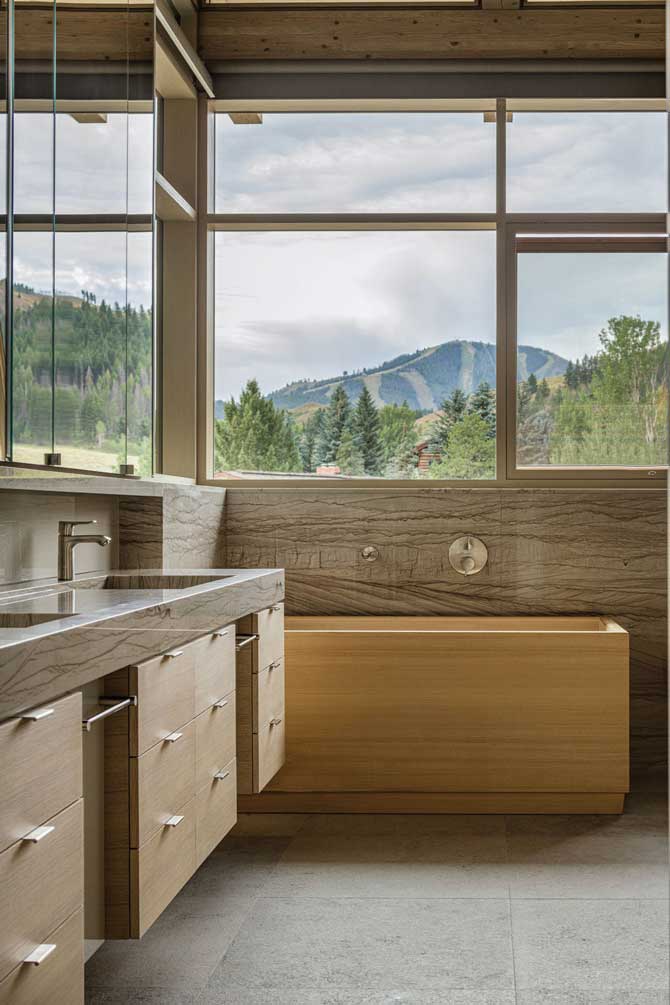
Kanzan House – Photo by Gabe Border
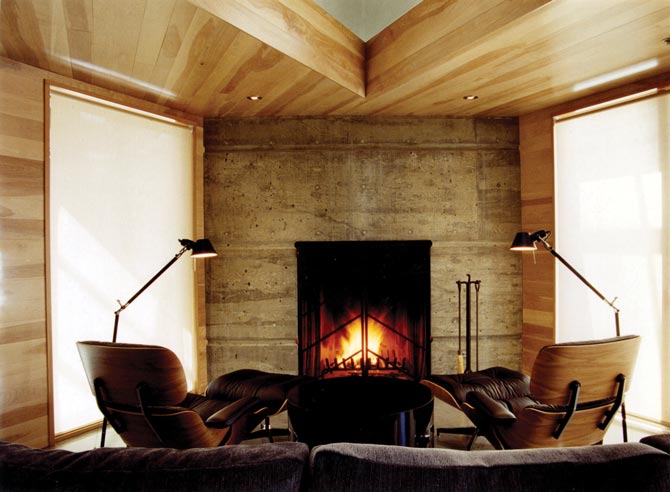
House at Eagle Creek – Photo by Tim Brown
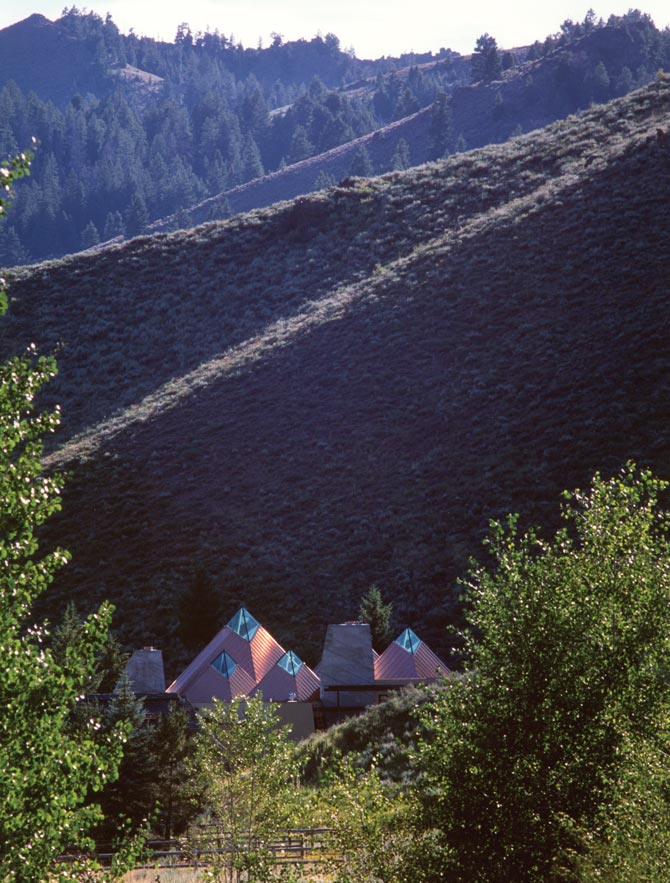
House at Eagle Creek – Photo by Fred Lindholm

House at Eagle Creek – Photo by Tim Brown



